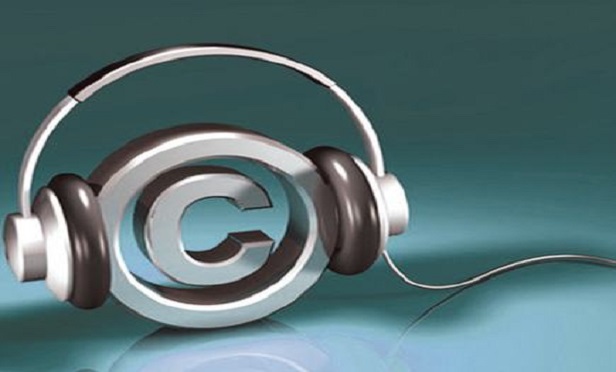Features

How Likely FTC's Comments On Copyright & AI May Become Policy
The FTC said that the misuse of training data like infringing on a work's copyright license is tantamount to unfair competition, thus implicating consumer protection with copyright policy and securing the agency's jurisdiction in the regulatory space.
Features

Ninth Circuit Focuses On Extrinsic Test In Ruling On Choreography Copyright
Reversing and remanding, the Ninth Circuit emphasized: "The district court's approach of reducing choreography to 'poses' is fundamentally at odds with the way we analyze copyright claims for other art forms, like musical compositions."
Columns & Departments
IP News
Ninth Circuit Upholds Copyright Infringement Dismissal In 'Jangle Vision Twins' Case
Features

AI and Law Practice: A Roadmap for Success In Modern Legal Firms, Part 2
Part Two of a Two-Part Article A report on the September panel discussion sponsored by the Miami Dade Bar Association Law and Technology Committee, on AI and how to effectively use it in law firms.
Features

Federal District Court Denies Copyright to Visual Art Piece Generated Solely By Artificial Intelligence
In August, the U.S. District Court of the District of Columbia affirmed the U.S. Copyright Office's denial of a copyright application for a visual piece of art generated entirely by an artificial intelligence-driven computer called the "Creativity Machine." Recognizing that U.S. "copyright law protects only works of human creation," the court determined that the Copyright Office "acted properly in denying copyright registration for a work created absent any human involvement."
Features

How D.C. Fed. Court Denied Copyright to AI-Created Artwork
The U.S. District Court for the District of Columbia recently upheld a final refusal by the U.S. Copyright Office to register a visual work that was "autonomously created by a computer algorithm running on a machine," which the plaintiff called the Creativity Machine and identified as the "author" of the work.
Features

Federal District Court Denies Copyright to AI-Generated Art Piece
Recognizing that U.S. "copyright law protects only works of human creation," the court determined that the Copyright Office "acted properly in denying copyright registration for a work created absent any human involvement."
Features

Online Extra: AI Copyright — Ethical and Legal Considerations for Marketing and Sales
Standing still and waiting to take action wasn't easy, but the patience paid off. Now, I understand some of AI's limitations and ways to leverage it to propel marketing and sales activities.
Features

The Impact of the Supreme Court's Goldsmith Decision on Copyright Enforcement Against AI Tools
The U.S. Supreme Court's opinion in Andy Warhol Foundation for the Visual Arts, Inc. v. Goldsmith sent ripples through the legal and artistic communities. Months later, legal scholars and art journalists continue to debate whether the decision opens the door for federal courts to act as "art critics." Many, however, downplay how the Supreme Court's decision impacts the ways in which copyright owners may enforce their rights against generative AI tools.
Features

Termination Notices and Copyright Act Claims Accruals
Termination is not automatic. It may be effected only through affirmative action on the part of the author or his or her statutory successors, who must serve an advance notice, signed by or on behalf of all of those entitled to terminate the grant, on the current copyright owner within specified time limits and under specified conditions.
Need Help?
- Prefer an IP authenticated environment? Request a transition or call 800-756-8993.
- Need other assistance? email Customer Service or call 1-877-256-2472.
MOST POPULAR STORIES
- Bankruptcy Sales: Finding a Diamond In the RoughThere is no efficient market for the sale of bankruptcy assets. Inefficient markets yield a transactional drag, potentially dampening the ability of debtors and trustees to maximize value for creditors. This article identifies ways in which investors may more easily discover bankruptcy asset sales.Read More ›
- The DOJ's New Parameters for Evaluating Corporate Compliance ProgramsThe parameters set forth in the DOJ's memorandum have implications not only for the government's evaluation of compliance programs in the context of criminal charging decisions, but also for how defense counsel structure their conference-room advocacy seeking declinations or lesser sanctions in both criminal and civil investigations.Read More ›
- Use of Deferred Prosecution Agreements In White Collar InvestigationsThis article discusses the practical and policy reasons for the use of DPAs and NPAs in white-collar criminal investigations, and considers the NDAA's new reporting provision and its relationship with other efforts to enhance transparency in DOJ decision-making.Read More ›
- Supreme Court Asked to Assess Per Se Rule Tension in Criminal AntitrustIn recent years, practitioners have observed a tension between criminal enforcement of the broadly written terms of the Sherman Antitrust Act of 1890 and the modern Supreme Court's notions of statutory interpretation and due process in the criminal law context. A certiorari petition filed in late August in Sanchez et al. v. United States, asks the Supreme Court to address this tension, as embodied in the judge-made per se rule.Read More ›
- Restrictive Covenants Meet the Telecommunications Act of 1996Congress enacted the Telecommunications Act of 1996 to encourage development of telecommunications technologies, and in particular, to facilitate growth of the wireless telephone industry. The statute's provisions on pre-emption of state and local regulation have been frequently litigated. Last month, however, the Court of Appeals, in <i>Chambers v. Old Stone Hill Road Associates (see infra<i>, p. 7) faced an issue of first impression: Can neighboring landowners invoke private restrictive covenants to prevent construction of a cellular telephone tower? The court upheld the restrictive covenants, recognizing that the federal statute was designed to reduce state and local regulation of cell phone facilities, not to alter rights created by private agreement.Read More ›
